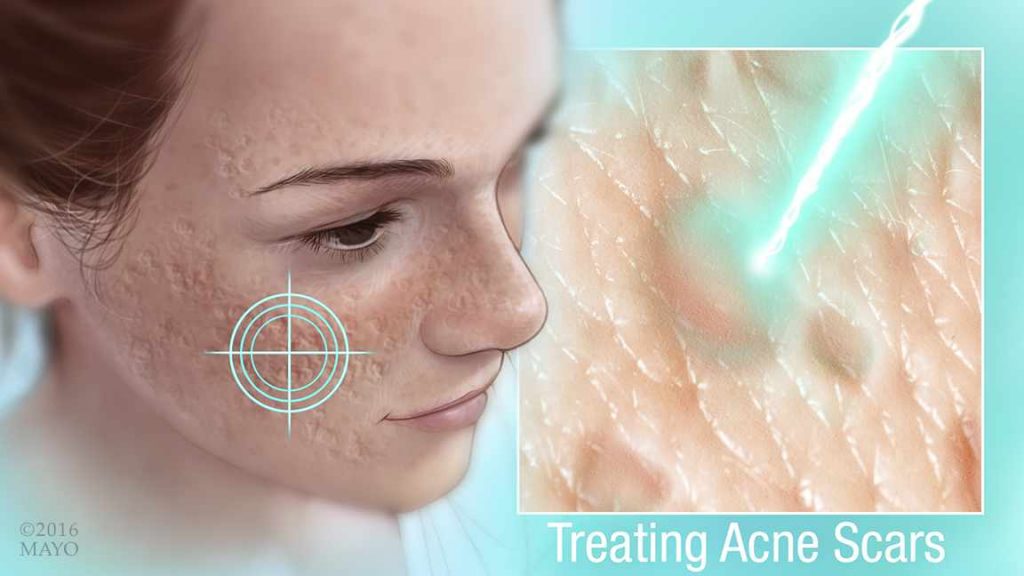-
Mayo Clinic Q and A: Treatment Options for Acne Scars That Don’t Improve Over Time

DEAR MAYO CLINIC: What is the best way to treat acne scars that are a few years old? How effective and safe are treatments?
ANSWER: A variety of treatments can be used to help reduce the appearance of acne scars. To be most effective, the inflammatory phase of acne that includes active pimple formation and redness needs to be resolved before treatment for scarring begins.
Moderate to severe cases of acne can result in scars that cause discoloration and indentations in the skin. In most cases, acne scars do improve over time without treatment. That’s particularly true of discoloration. Indentations may be more stubborn and less prone to disappearing on their own.
For lasting skin color changes, creams that contain a bleaching agent can help fade discoloration. These products are available without a prescription at many drug stores and pharmacies for you to use at home. It’s also important to consistently use sunscreen with an SPF of 30 or higher on your face and any other areas of scarring to protect your skin and minimize contrast in skin color.
For scarring that leaves skin indentations, you have a number of options. Dermatologists are trained in procedures that work to smooth the skin, which is the goal of these treatments. For example, laser resurfacing can help improve skin tone and appearance. For this procedure, a dermatologist uses a laser to damage the collagen beneath your skin and stimulate the growth of new, healthier collagen. Other energy-based procedures, such as pulsed light sources and radiofrequency devices, also can be used to help make scars less noticeable.
In some cases, soft tissue fillers, such as collagen or fat, can be injected under the skin or into indented scars to fill them out. Injections of botulinum toxin, or Botox, also may be used around acnes scars to relax the skin, reduce puckering and improve the skin’s overall appearance. Both of these techniques need to be repeated occasionally to maintain their results.
For more severe scarring, your dermatologist may recommend a chemical peel or dermabrasion. These procedures involve removing the top layer of skin to eliminate surface scars and make deeper scars less apparent. Healing and recovery after these techniques can take several weeks or more.
Surgery may be useful in some cases of acne scarring, too. Using a minor surgical procedure called punch excision, a dermatologist cuts out individual acne scars and repairs the wound with stitches or a skin graft. Another technique called subcision involves inserting needles under the skin to loosen fibers below a scar to help improve its appearance.
All of these approaches have been approved for treating acne scars, but each of them comes with the potential for side effects. Before you decide on any treatment, review the possible side effects with your dermatologist. If you have any questions, don’t hesitate to ask.
Not all of these treatments work the same way for everyone. Some people may see better results with one approach than others do. In addition, acne scars may require a combination of treatments to reduce or eliminate them. To determine the best plan for you, make an appointment to talk with a dermatologist about the range of treatment options that are available. He or she can review the risks and benefits of each, and help you decide what’s appropriate for your situation. — Dr. Jennifer Hand, Dermatology, Mayo Clinic, Rochester, Minnesota







